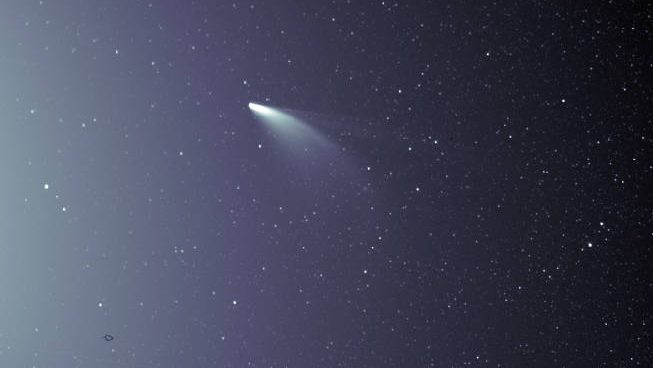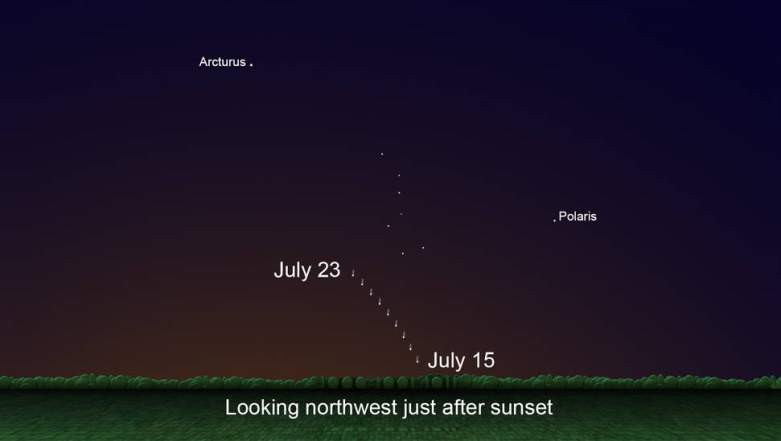
NASA
Comet NEOWISE is here, but not much longer. It was first discovered by NASA on March 27. Once it’s gone, you won’t be able to see it again for 6,800 years.
Here’s what you need to know.
Map & Times for Seeing Neowise
Earlier this month, you had to get up early in the morning to see Neowise just before sunrise. But now you can see NEOWISE at night in the early evening, NASA explained. In the Northern hemisphere, NEOWISE is now visible just after sunset local time. You can see NEOWISE any time (including today), but its closest approach to the Earth will be on July 23.
Here’s a map provided by NASA for seeing Neowise. As you can see, the area you’ll be looking in the sky will change slightly depending on the date this month.
After sunset, look in the northwest sky below the Big Dipper, NASA advises. The comet will be a little higher in the sky over as the month progresses. NASA notes: “Observers at lower latitudes will see the comet lower in the sky, while it will appear higher for observers farther north.”
This video also explains how to see the comet in the sky.
The best way to watch NEOWISE (also known as Comet C/2020 F3) is by finding an area away from bright city lights, so the light pollution doesn’t dim your view of the comet, NASA suggests. Binoculars or a small telescope will help you see it better, because without these tools it might look like a star that has a tail and is a little fuzzy.
Here’s another video discussing how to see Neowise.
If you want to watch NEOWISE live, check out Gian Masi’s Virtual Telescope Project live stream airing on July 23.
Masi writes: “Comet C/2020 F3 NEOWISE is giving a superb show in the sky: the Virtual Telescope Project will show it to you live, online, next 23 July, when the comet will be at its closest to our planet. Join us from the comfort of your home!”
NEOWISE is written in all-caps because it’s named after the survey explorer that discovered it, NASA’s Near-Earth Object Wide-field Infrared Survey Explorer (NEOWISE.)
This isn’t the only stargazing event that you’ll want to catch in the near future. Space.com reported the following events coming up:
- July 19: You can see the crescent of the old moon near Mercury just before dawn
- July 20: Saturn at Opposition (it will be visible all night)
- July 22: Mercury at Greatest Western Elongation, just before dawn
- July 24: Watch Europa’s shadow and the Great Red Spot transit Jupiter around 1:20 a.m. Eastern to 3:40 a.m. Eastern
- July 27: First Quarter Moon
- July 28: Southern Delta Aquariids Meteor Shower peak just before dawn. It will be active before this, but this is when it peaks.
- July 31: Venus will rise in the east around 3 a.m. local time.
- August 12: Perseid meteor shower
- December 13-14: Geminids meteor shower
- December 14: Solar eclipse (not visible in North America)
- December 21: Jupiter and Saturn in conjunction
As you can see, even beyond Comet NEOWISE, a lot is happening in the skies for the rest of 2020 that you’ll want to see.
READ NEXT: Daily COVID-19 Updates
